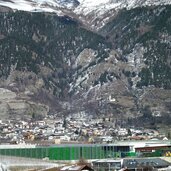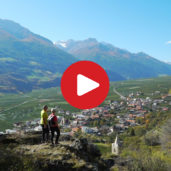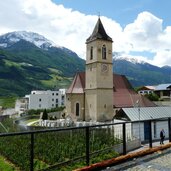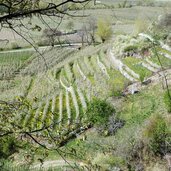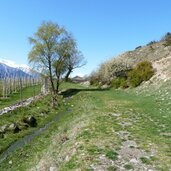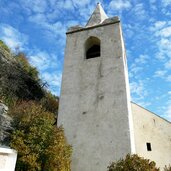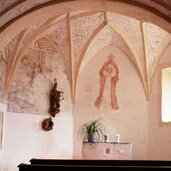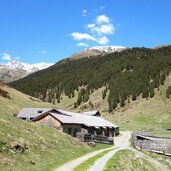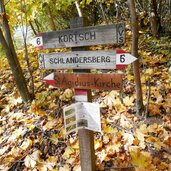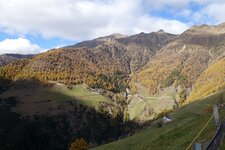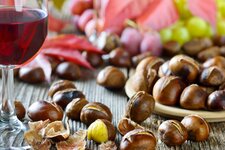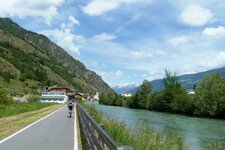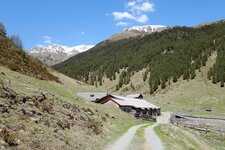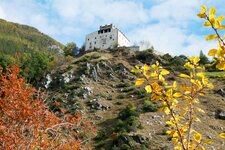The Romanesque Church of St. Giles stands on a rocky outcrop above Corces - a destination for hikers and culture enthusiasts
In terms of size, Corces (Kortsch) is smaller than Silandro village but seems to have merged with it: Only the main road separates the two places, which were once independent. Here, at the foot of the alluvial fan of the Gadria stream on the slopes of Monte Mezzodì, the Val Venosta reveals its sunniest side. Apples, apricots, grapes, and chestnuts thrive in this mild climate.
The history of Corces dates back to the year 1000 AD. Several historical structures from past centuries bear witness to its past, each worth seeing if publicly accessible. The Church of St. Giles particularly stands out, not least because of its location: Like a rock church, it sits on the slopes of Monte Sole in the Val Venosta. Frescoes from the 13th and 15th centuries adorn the interior walls, while externally, a large mural of St. Christopher decorates the south façade.
The rock is known as "Schatzknott" and was inhabited even in prehistoric times. Archaeological excavations nearby have uncovered the remains of a prehistoric settlement. Other historic sites and places of worship include the Parish Church of St. John the Baptist, the Church of St. Lawrence, St. George's Chapel, the Chapel on the Corces Meadows, and the Rosary Path.
Where in spring the apple blossom bathes the area in white, in summer the Val Venosta Cycle Path winds its way from the Resia Pass to Merano. In autumn, sweet chestnuts are gathered and grapes are harvested here, meaning that during the traditional Toerggelen in October and November, new wine can be tasted and roasted chestnuts enjoyed with butter.


